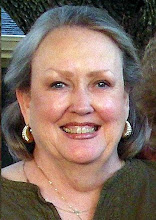
When I was a young girl, I attended a private school which was run by the nuns. The school was actually their convent and their home. My Mother had graduated from the same school, so naturally, she wanted me to follow in her footsteps and go to her Alma Mater. It was a beautiful school and I am so thankful that I was able to attend there. I got an A+ education, thanks to the dedicated Sisters of St. Mary.

My father, as a young man, was a map maker, and he had beautiful penmanship. One time I asked him to show me how tiny he could write, and he printed "The Lord's Prayer" for me on a piece of paper the size of a nickel. It was amazing.
 He also taught me the importance of taking care of your "writing instrument". I was NEVER allowed to touch his personal fountain pen. I now have several fountain pens and I understand what he meant.
He also taught me the importance of taking care of your "writing instrument". I was NEVER allowed to touch his personal fountain pen. I now have several fountain pens and I understand what he meant.
Once someone else uses your pen, it never writes the same. It has become personalized to your touch and when someone else uses it, the nib changes and it will never write the same.
As we were learning penmanship (The Palmer Method for those of you old enough to remember when they actually taught penmanship in school), Sister Benedictine would always say, "Now young ladies, practice your "push-pulls" so your writing won't look like chicken scratch."
As we were learning penmanship (The Palmer Method for those of you old enough to remember when they actually taught penmanship in school), Sister Benedictine would always say, "Now young ladies, practice your "push-pulls" so your writing won't look like chicken scratch."

Austin Palmer developed a "muscular movement" which is a system of ovals and straight lines called "push-pulls" that helped students achieve control and rhythm. With practice, students produced examples of flowing, graceful penmanship known as script writing. You had to practice, practice ... practice! This was not my class but we also had to practice on the blackboard so everyone could see your progress.

If you did anything wrong in school and got caught ;-), your punishment was to write "I will not _________" 1000 times in your best Palmer Penmanship. If you made a mistake, you had to start over. Trust me, after doing this a couple of times. you tried to always be on your best behavior. The nuns lived there so they didn't care if it took all night. They had no place to go! Here are some nuns that are at our sister Diocese in Malawi. Aren't they lovely! The nuns I had in school weren't nearly this pretty or young.

Chicken scratch, when referred to by the nuns, meant incredibly messy handwriting that is nearly impossible to read. Usually the only person who can read it is the person that wrote it. Sometimes not even they can read it after a while. The writing looks like the footprints and/or scratches chickens leave in the dirt hence the name. If you did a really good job with your handwriting, you would be rewarded with a special pin like this one. It was every young lady's dream to have one.

After doing some research, I discovered that the term chicken scratch actually comes from a description of traditional Tohono O'odham dance, which involves kicking the heels high in the air, which supposedly bears a resemblance to a chicken scratching.

Chicken scratch (also known as waila music) is a kind of dance music developed by the Tohono O'odham people. The genre evolved out of acoustic fiddle bands in southern Arizona, in the Sonora desert. These bands began playing European and Mexican tunes, in styles that include the polka, schottisch and mazurka.
Now that you've had your history and writing lesson for the day, I think I'll sign off. Tomorrow is Easter Sunday and we are going to have a wonderful family gathering. Please pray for good weather of us as we hope to be outdoors for a trek to the zoo and a picnic.
XOXO, Pcasso

No comments:
Post a Comment